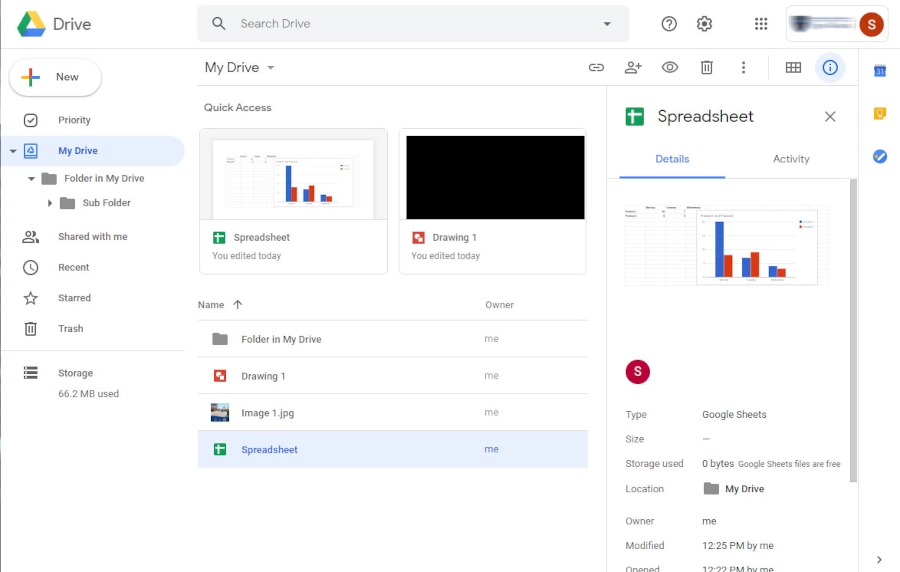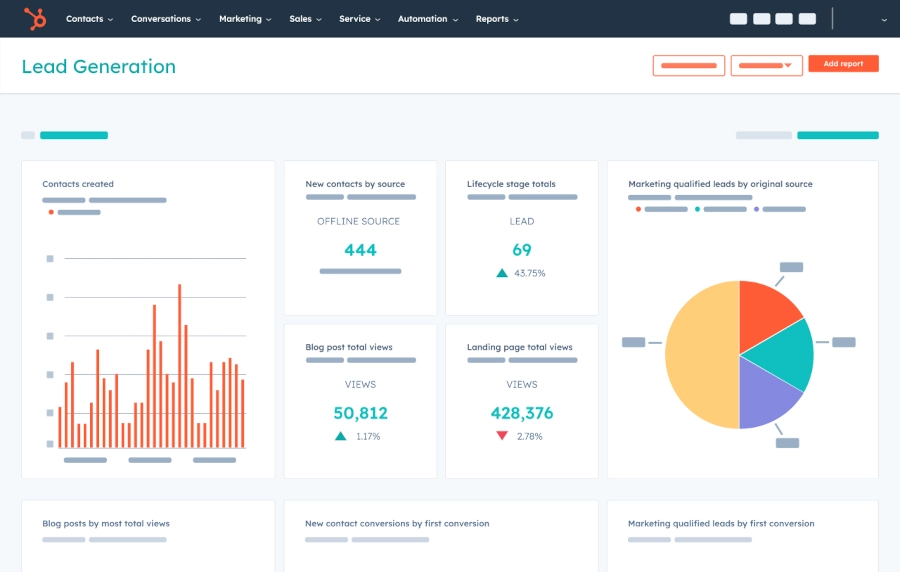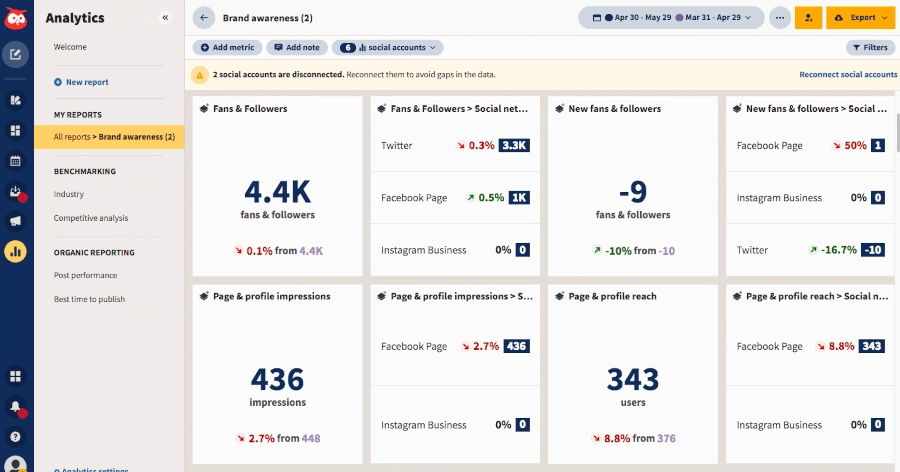Reading Time: 23 Minutes
Software shopping can be an overwhelming task. Whatever problem you’re trying to solve, there is a seemingly endless list of options. And a lot of them come with a disorienting price tag.
When it comes to content management, having software you’re comfortable with is critical—especially when juggling content from 100+ creators in an influencer marketing program. In this blog, we’ll introduce you to what content management software is capable of, offer some shopping tips, and show you some examples of our favorite paid and free options on the market.
Content management system (CMS) in influencer marketing refers to planning, creating, organizing, and distributing content across various channels and platforms. It plays a crucial role in influencer marketing as it helps ensure that the content produced by influencers aligns with the brand’s objectives and resonates with the target audience.
The key components of content management in an influencer marketing campaign include:

Managing all of that valuable influencer content will be tricky without help. Fortunately, there are plenty of content management tools out there you can use without needing to increase headcount. But before we get into the options, let’s talk about which features to look out for.
Look for tools that offer communication channels and collaboration features to facilitate seamless communication between your team and influencers. This may include email integrations, comment threads, and real-time collaboration on content creation.
A content calendar feature helps you plan and organize your content schedule, including the dates, platforms, and influencers involved. It allows you to visualize your content pipeline and ensure a consistent flow of fresh content to your audience.
Look for a tool that files all your influencer content into an organized library. You should be able to search the content easily so you can repurpose the exact piece you’re looking for at the drop of a hat.
Emailing back and forth with creators to approve content is a tedious process that no influencer marketing manager should have to endure. An effective content management tool should provide a streamlined process for reviewing content, providing feedback, and requesting revisions. That way, your influencer content always stays on brand and compliant.
Storing brand guidelines and creative briefs within your content management platform ensures your influencers can always access the information necessary to create content that aligns with your voice, values, and messaging. Just remember not to make your briefs too constricting so your influencers still have plenty of room for creative freedom.
Ensure the content management tool integrates smoothly with the social media platforms where you plan to distribute influencer content. This enables seamless publishing, scheduling, and content monitoring across multiple platforms.
Legal trouble is a headache you absolutely do not need and can easily avoid with the right tools. Consider tools that offer features to assist with regulatory compliance, like disclosure reminders for sponsored content and contract management tools to ensure compliance with legal and advertising guidelines.
The tool should have an intuitive and user-friendly interface that makes it easy for your team and influencers to navigate, collaborate, and manage content efficiently. Bonus points if all of your tools can live in one easy-to-navigate platform.
If you anticipate running large-scale influencer marketing campaigns or have specific customization needs, choose a tool that can scale and adapt to your requirements. It should be able to handle multiple campaigns, influencers, and content formats effectively.
Evaluate the level of customer support provided by the tool’s provider. Roadblocks are inevitable, making timely and responsive customer support valuable in resolving any issues so you don’t have to waste a second that could be spent running your campaigns.
Look for tools that offer robust analytics and tracking features to measure the performance of influencer-generated content. This includes tracking metrics such as reach, engagement, conversions, and sales. The tool should provide clear and comprehensive reports to assess the effectiveness of your influencer marketing campaigns.
We’re pretty sure you’ve heard of this one, but if not, it’s a cloud-based storage and file synchronization service provided by Google. It allows you to store files, documents, photos, videos, and other digital content in the cloud, making them accessible from any device with an internet connection.

Image via CompareCamp
Pros:
Cons:
Our take:
Google Drive is about as basic as it gets for content management. If you’re just starting out, this is a great place to start storing your content. But as you scale, you’ll need better tools to help you better manage your content, relationships, and more.
HubSpot is an all-in-one inbound marketing and sales software platform that provides tools and solutions for businesses to attract and engage customers. For now, we’re just going to discuss HubSpot’s free version. However, there are paid versions of the software that can unlock more sophisticated capabilities.

Image via Hubspot
Pros:
Cons:
Our take:
HubSpot is a great place to start if you’re looking for free inbound marketing, sales, and customer service software to complement your influencer marketing strategy. But just like any free version, it has plenty of limitations. You’ll likely outgrow the free version eventually and have to spend some money to upgrade.
Buffer is a social media management software to help schedule, publish, and analyze social media posts across various platforms. It provides a centralized platform to manage multiple social media accounts and streamline marketing efforts. It offers a free version and paid options.

Image via Buffer
Pros:
Cons:
Needless to say, you’re getting the bare bones with a free version of a software that also offers paid options. Here are some of the things you’re missing out on without a paid plan:
Our take:
Buffer’s free version is great for scheduling social media content. However, if you want any deep insights into how that content performs, you’ll have to open up the checkbook.
Hootsuite is a social media management platform that helps businesses and individuals manage and schedule their social media content across various platforms. It offers a centralized dashboard where users can monitor and engage with multiple social media accounts, schedule posts, analyze social media performance, and collaborate with team members.

Image via Hootsuite
Pros:
Cons:
Our take:
Hootsuite is a well-known social media management platform with a solid reputation. Its scheduling capabilities, content curation, social listening, and analytics/reporting tools offer value. However, the interface complexity, pricing structure, and platform limitations may pose challenges for some users. Since Hootsuite no longer offers a free version, take a long look at your specific goals and needs before purchasing.
GRIN is an influencer marketing software designed to help brands of all sizes run high-performing campaigns with content creators. From discovering influencers to managing content and reporting on results, GRIN has all the tools you need to get the most out of your influencer relationships.

Pros:
Cons:
Learning curve: Like any software platform, GRIN may have a learning curve, especially for users new to influencer marketing or the specific features of the software. GRIN does, however, offer dedicated customer success managers for most plans.
Overwhelming feature list: If you’re very new to influencer marketing, the robustness of GRIN’s platform might be more than you require.
Our take:
GRIN consistently ranks at the top of the pack for influencer marketing software, according to review sites like G2 and Capterra. With unmatched content management features, GRIN is a must for any brand serious about running a first-class influencer program.
Effective content management in influencer marketing isn’t always as easy as you might think. Remember these best practices to ensure everything runs smoothly when you and your creators start cranking out that valuable content.
Setting clear goals will help you categorize your content into various stages. For example, some touchpoints might include:
Having detailed content guidelines helps ensure you only have the highest quality pieces. Campaign briefs and guidelines outline success for your creators and help them come up with the most useful content for your brand. Just make sure to…
Guidelines are important, but whatever you do, don’t stifle your influencers’ creativity. Remember, they know what resonates with their audience better than you do. That’s how they built their following, after all. Give them some guard rails, but always let them drive.
It’s nearly impossible to communicate effectively with a large group of creators. As you accumulate more people creating content for you, you’ll need a way to automate certain correspondences and ensure everyone has all the information and materials they need.
There’s no need to go back and forth trying to approve creator content if you can avoid it. Look for tools that simplify the approval process so you can focus on getting that content out into the world.
We’ve already mentioned a few content management tools that offer a great starting point. But some of them can get pretty expensive, and not all offer a free version. Do your research before committing. Take another close look at all your program goals and KPIs to ensure you’re getting the most for your money with as little fluff as possible.
Nothing groundbreaking here—keep an organized content calendar so you always know what is going out and when. This will help keep you from duplicating posts and give you a bird’s eye view of your entire content strategy.
Content from your marketing team is good. Content from influencers is better. But organic content from creators who naturally hype up your brand online is best. Invest in tools that help you track this content down easily and enable you to repurpose it throughout your marketing funnel.
Track everything! You’re shooting in the dark without a clear look at what content works and what doesn’t. There are plenty of tools that offer this. Just keep an eye on the subtle differences that best support your mission.
Treat your creators well and they will treat you well in return. Leverage your best relationships to collaborate on big-picture projects and create tried and true content that has already been proven to work for your creators and your brand.
There will come a time when you need a content management tool for your business to reach its full potential. Start with a free version, if possible, then work your way up. But before making your choice, outline your goals carefully and do plenty of research into everything that is available on the market. Good luck!
Our team keeps a finger on the pulse, so you’re always working with the latest information.